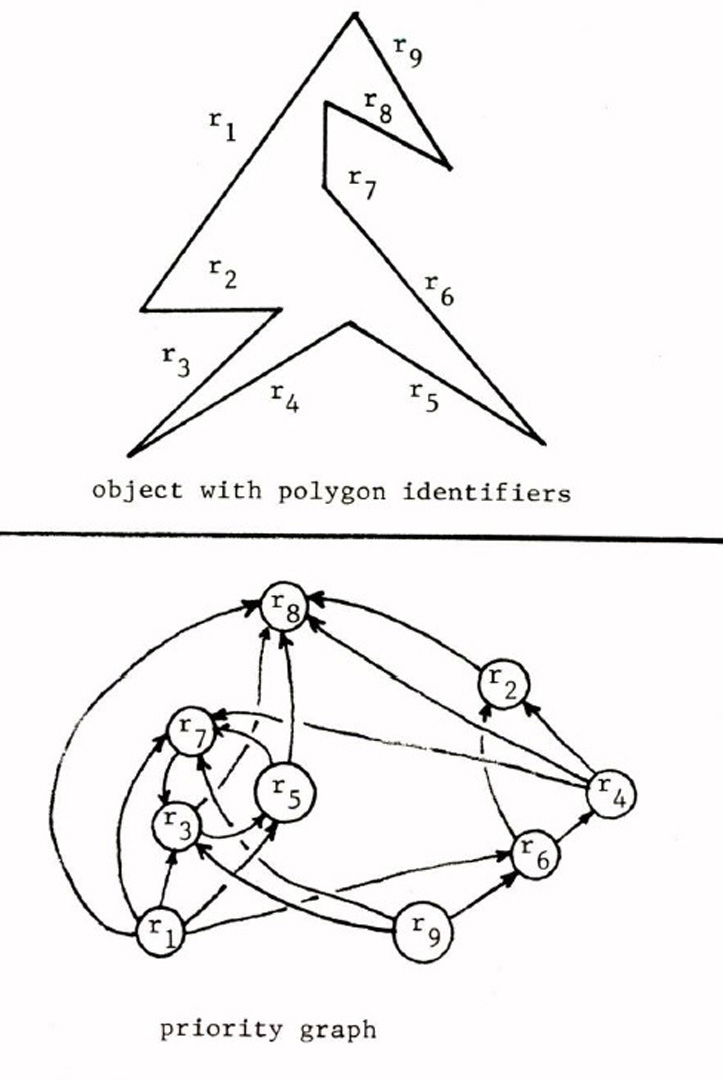“Predetermining visibility priority in 3-D scenes (Preliminary Report)” by Fuchs, Kedem and Naylor
Conference:
Type(s):
Title:
- Predetermining visibility priority in 3-D scenes (Preliminary Report)
Presenter(s)/Author(s):
Abstract:
The principal calculation performed by all visible surface algorithms is the determination of the visible polygon at each pixel in the image. Of the many possible speedups and efficiencies found for this problem, only one published algorithm (developed almost a decade ago by a group at General Electric) took advantage of an observation that many visibility calculations could be performed without knowledge of the eventual viewing position and orientation—once for all possible images. The method is based on a “potential obscuration” relation between polygons in the simulated environment. Unfortunately, the method worked only for certain objects; unmanagable objects had to be manually (and expertly!) subdivided into managable pieces. Described in this paper is a solution to this problem which allows substantial a priori visibility determination for all possible objects without any manual intervention. The method also identifies the ( hopefully, few) visibility calculations which remain to be performed after the viewing position is specified. Also diescussed is the development of still stronger solutions which could further reduce the number of these visibility calculations remaining at image generation time. The reduction in overall processing and memory requirements enabled by this approach may be quite significant, especially for those applications (e.g., 3-D simulation, animation, interactive design) in which numerous visible surface images are generated from a relatively stable data base.
References:
1. Aho, A.V., Hopcroft, J.E. & Ullman, J.D. (1974) The Design and Analysis of Computer Algorithms, Addison-Wesley
2. Berge, C. (1973) Graphs and Hypergraphs, North Holland
3. Knuth, D.E. (1973) The Art of Computer Programming; Volume 1/Fundamental Algorithms, (Second Edition), Addison Wesley
4. Preparata, F.P. & Yeh, R.T. (1973) Introduction to Discrete Structures, Addison-Wesley
5. Schumacker, R.A., Brand, R., Gilliland, M. & Sharp, W. (1969) “Study for Applying Computer-Generated Images to Visual Simulation”, AFHRL-TR-69-14, U.S. Air Force Human Resources Laboratory
6. Sutherland, I.E., Sproull, R.F. & Schumacker, R.A. (1974) “A Characterization of Ten Hidden-Surface Algorithms”, ACM Computing Surveys, 6 (1):1-55





